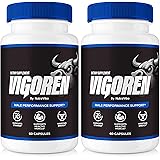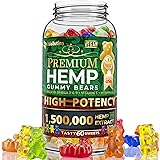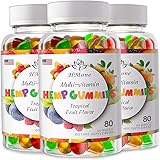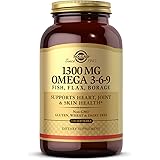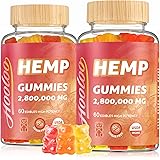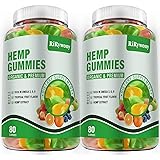Are you concerned about keeping your brain sharp as you age? Many people share this worry. The video above delves into critical aspects of brain protection and cognitive health, offering insights from Lara Freeman and Ford Brewer. They explore various strategies to maintain mental clarity throughout your life. This post will expand on their discussion, focusing on key elements for robust cognitive health.
Understanding how to safeguard your brain is vital. It impacts your overall quality of life. The fear of cognitive decline is very real for many. However, proactive steps can make a significant difference. Let’s explore how CBD oil, targeted exercise, and personalized health monitoring contribute to a resilient mind.
CBD Oil: A Neuroprotective Ally for Cognitive Health
The discussion highlights the growing interest in CBD oil. It is seen as a potential agent for brain protection. Lara Freeman, having experienced a traumatic brain injury, shares her personal journey. Her search for solutions led her to CBD. This journey was driven by a deep fear of cognitive decline.
While the exact mechanisms are still being studied, CBD exhibits neuroprotective properties. It acts as an antioxidant. This means it helps fight damaging free radicals in the brain. Furthermore, it impacts neurotransmitters. These are the chemical messengers in your brain. Scientists are still uncovering whether one or both of these actions are primary. What is clear is its potential benefit.
One key aspect of CBD’s effectiveness is its ability to cross the blood-brain barrier. This barrier is a protective filter. It prevents many substances from reaching the brain. However, CBD can pass through it. This allows it to exert its effects directly where needed. For instance, the eyes are also behind this barrier. Supplements targeting eye health face similar challenges. The ability of CBD to reach brain tissue is a crucial factor in its perceived benefits for cognitive function.
Combating Cognitive Decline: Assessment and Strategies
Preventing cognitive decline is a major goal. Several tools and approaches exist. One important assessment tool is the Montreal Cognitive Assessment, or MoCA. This 30-question test is more reliable than older methods. It helps evaluate various cognitive abilities. These include short-term memory, executive function, and attention. A score gives a numerical range. This indicates mild, moderate, or severe decline. Early assessment can guide interventions.
The Bredesen approach is another notable strategy. It focuses on a comprehensive plan to address factors contributing to cognitive decline. This includes looking at inflammation, mold exposure, and heavy metals. While thorough, this approach can be very intensive. It often requires significant patient involvement. However, personalized health plans are gaining traction. They focus on individual needs. This moves away from a one-size-fits-all model.
Beyond clinical assessments, everyday activities matter. Engaging in “dual tasking” is highly recommended. This involves doing a motor task and a cognitive task simultaneously. For example, drumming on a therapy ball while performing leg movements. This challenges your brain and body together. It offers more benefit than simple word searches. Programs like Lumosity and BrainHQ also offer online brain training. However, the brain-body approach often yields broader benefits.
Exercise: Fueling Brain Health and Longevity
Exercise is perhaps the most powerful tool for brain protection. Its impact on cognitive health is profound. The strongest association for prevention is exercise. It significantly reduces the risk of cognitive decline. But what kind of exercise is best?
Recent research challenges older ideas. Long, slow distance aerobic exercise used to be the gold standard. However, studies now show other forms are more beneficial. High-intensity interval training (HIIT) leads the way. It involves short bursts of intense activity. These are followed by brief recovery periods. Resistance training also shows impressive results. These two types of exercise notably improve mitochondrial function. Mitochondria are the powerhouses of our cells. Healthy mitochondria are crucial for aging well. They support robust cognitive function.
A Mayo Clinic study highlighted these findings. Researchers studied different age groups. They engaged in various exercise types. HIIT showed the most improvement in mitochondrial health. This was followed by resistance training. Long-slow distance came in a distant third. This emphasizes the importance of acutely taxing muscles. It’s about stressing the body positively. This is a concept known as hormesis. It promotes cellular resilience and longevity. Even short, 30-second intervals can be highly effective. This makes exercise more accessible for many individuals.
Vascular Inflammation and Personalized Health Data
Vascular inflammation is a critical factor in cognitive decline. It refers to inflammation in your blood vessels. This can harm your brain over time. Exercise helps reduce this inflammation. So do other lifestyle choices. Focusing on vascular health is central to brain protection. Many chronic diseases are linked to inflammation. Addressing it can improve overall health. It also specifically benefits your brain.
Personalized health data can empower individuals. Continuous glucose monitoring (CGM) is an example. Devices like the Freestyle Libre track blood sugar levels in real-time. This allows users to see how different foods and activities affect them. For instance, a short walk after a high-carb meal can dramatically lower blood sugar. This kind of immediate feedback is powerful. It helps people make informed decisions. They can “eat to the glucometer” and “exercise to the glucometer.” This customized approach moves beyond generic advice. It reveals individual metabolic patterns. This precision supports better health outcomes and enhanced cognitive health.


